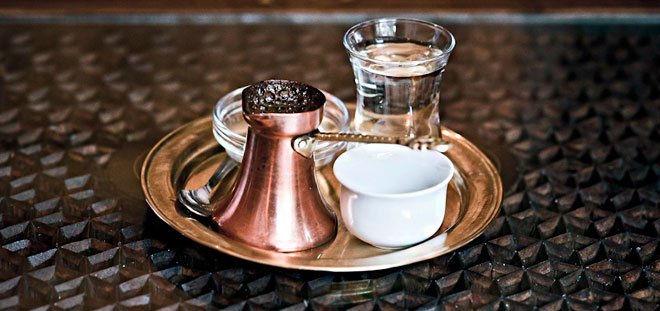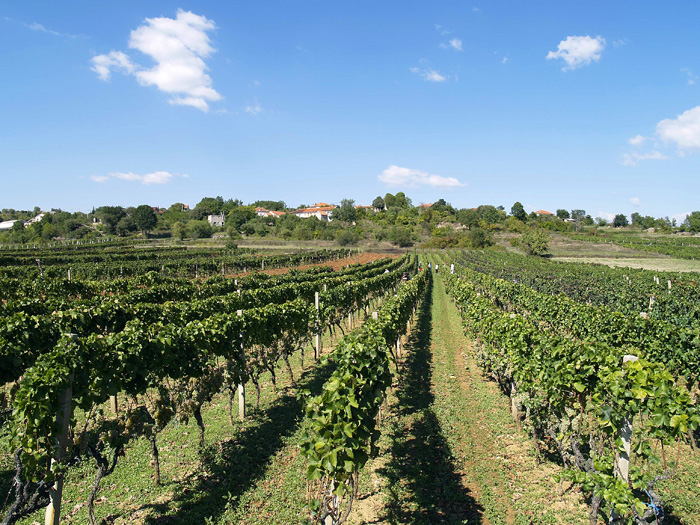Coffee
Coffee drinking is a tradition and almost a ritual, a form of socializing. Bosnians typically drink a local variety of Turkish coffee. On occasions when alcoholic beverages are consumed, Bosnians serve Meze which typically consisits of air-dried meats, sujuk, cheese and pastries.

Wine
Wine has been consumed here for 2200 years. The culture of wine growing and wine production in Bosnia and Herzegovina dates back to the Illyrian period and the Thracians who introduced grapevine seedlings to the Balkans.
When talking about the history of wine growing in BiH, it is important to mention that its borders used to encompass a much broader area than today. Namely, the Medieval Bosnia was once, without the later adjoined southern part (Hum), a distinguished wine growing and wine producing region. Almost every aristocratic family had their own vineyards throughout the Middle Ages. This is clearly evident in the first detailed catastral records dating back to the 15th and 16th century.
Link to Wine Route of Bosnia & Herzegovina.
Presently, the production of wine in the region is limited to river basins of the rivers Neretva and Trebišnjica, corresponding to the Herzegovina wine growing region including Mostar. Lištica and Jablanica vineyards. Towards the end of the 19th century, with the first wine exports to the Western Europe, wine business becomes a significant source of income in Herzegovina, and this trend continues with market conquering all over the world.

Herzegovinian winemakers aspire to be recognized for their Žilavka and Blatina as unique grape varieties in the world of wine and to present themselves to the world through the wine that captures the savor of the soil and the fervency of the Herzegovinian sun.
Blatina has a functional female flower (auto-sterile), and for that reason it is always cultivated in plantations with other varieties such as Alicante bouschet (Kambuša), Merlot, and Trnjak, which at the same time pollinate Blatina. During the period of insemination, because of the rain, it can fail in giving fruits, and it is then called ‘praznobacva’ (empty barrel). Blatina can produce dry red wine with 12 to 13.5 % of alcohol, 5 to7 g/l of total acidity, 25-32 g/l of extract. It has a dark ruby red color. Aged in both stainless steel and oak barrels, Blatina will often exhibit aromas and flavors that are spice and coffee-driven. Longer aging will often result in dry chocolate flavors as well. Production is focused in the area south of Mostar around the towns of Citluk, Medugorje, Ljubuški, and Capljina.
Žilavka is a white wine grape variety planted primarily in the Mostar region of Herzegovina (southern part of Bosnia and Herzegovina). As a varietal, Žilavka is known for its nutty aroma and flavors. Once widely planted throughout the former Yugoslavia, Žilavka is today mostly a minor blending grape that can be found in some Croatian, Macedonian and Slovenian wines. Žilavka is also known under the synonyms Mostarska, Mostarska Žilavka, Žilava Hercegovacka, Žilavka Bijela, and Žilavka Mostarska. There are other, smaller varietals such as the red variety Vranac, which is grown much more in neighboring Montenegro, but Žilavka and Blatina are by far and away the most common and well-crafted wines of the region.




Comments are closed.